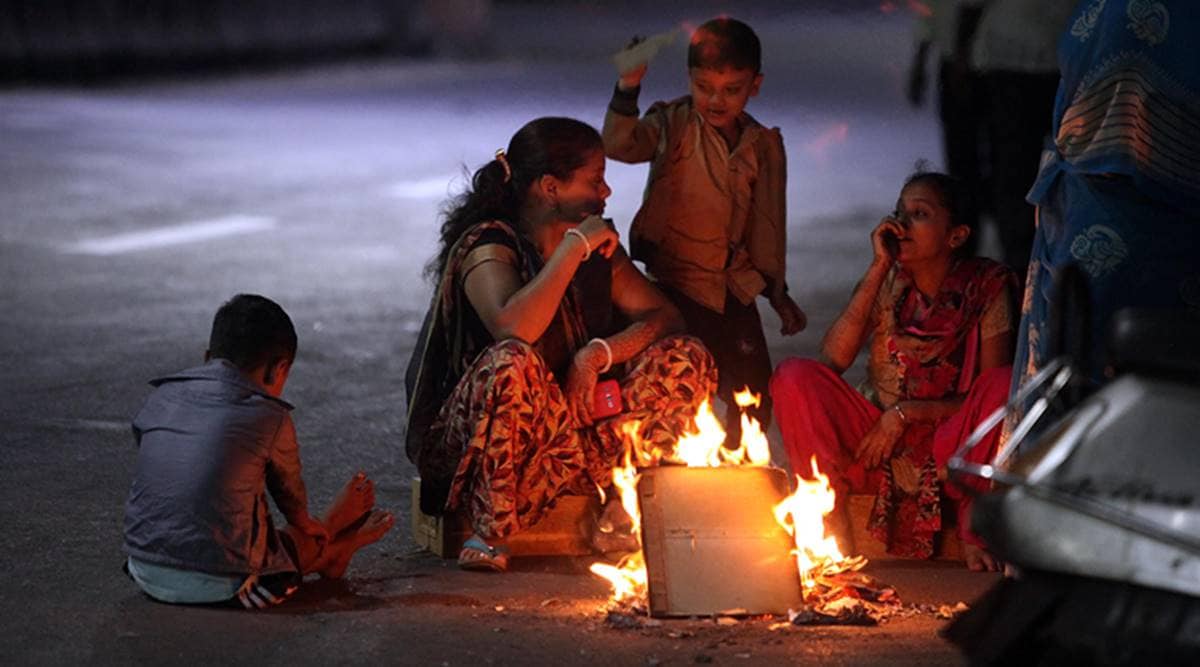 Cold winter conditions will prevail over some of the core coldwave zones. These include interior Maharashtra, north Karnataka and Telangana. (File)
Cold winter conditions will prevail over some of the core coldwave zones. These include interior Maharashtra, north Karnataka and Telangana. (File) The India Meteorological Department (IMD) Wednesday said that minimum temperatures during the upcoming winter season over most regions of the country will be normal or warmer than normal.
This was stated by Mrutyunjay Mohapatra, director general of IMD, while releasing the Seasonal Outlook for Winter temperatures (December 2021 – February 2022).
“Most parts of northwest, central and northeast areas along the Himalayan foothills and south will experience normal to above normal minimum temperatures during December to February winter season,” said Mohapatra.
However, cold winter conditions would prevail over some of the core cold wave zone. These include interior Maharashtra, north Karnataka and Telangana during the winter season.
This year, the number of cold wave events and days over Jammu, Himachal Pradesh and Uttarakhand will be fewer than usual even though cold day conditions are likely over these regions, added Mophapatra.
Due to clouding and associated rainfall, in many areas — including northeast and southern India regions — the likely maximum temperatures during December to February will remain below normal, indicating cold day conditions, said D Sivanand Pai, head of Climate Research and Services, IMD, Pune.
With winter season officially commencing from Wednesday, minimum temperatures during the next two weeks will show marked drop over most parts of the country, except south interior Karnataka and the northeast regions of India.
On the ongoing northeast monsoon battering southern India, the IMD stated that it has been a record-breaking wet November for southern peninsular India. The southern states received 316.2mm rainfall, which was 169 per cent above the Long Period Average. This century’s wettest November was mainly due to strong and moist easterly winds and five consecutive low- pressure systems that dumped large amounts of rain, mainly over Tamil Nadu, Kerala and coastal Andhra Pradesh.
In December, too, northeast monsoon will continue to remain as active and bring more rain over southern peninsular India, Mohapatra said.
The number of very heavy rain (115.6 mm to 204.5 mm) events recorded in November were 26 in 2017, 36 in 2018, 24 in 2019, 98 in 2020 and 168 in 2021. Similarly, the number of extremely heavy rain events (more than 204.4 mm in 24-hours) too spiked between 2017 – 2021 — 1 in 2017, 4 in 2018, none in 2019, but 11 each in 2020 and 2021.
“There has been significant rise in both heavy and very heavy rain events in November,” said the IMD chief.
- The Indian Express website has been rated GREEN for its credibility and trustworthiness by Newsguard, a global service that rates news sources for their journalistic standards.

